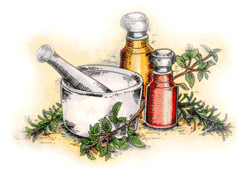 Abdominal Injury Abdominal Injury |
 Achilles Tendon Achilles Tendon |
 Ankle Bone Injury Ankle Bone Injury |
 Ankle Strain Ankle Strain |
 Ankle Synovitis Ankle Synovitis |
 Arm And Shoulder Tenosynovitis Arm And Shoulder Tenosynovitis |
 Arm Contusion, Forearm Arm Contusion, Forearm |
 Arm Contusion, Radial Nerve Arm Contusion, Radial Nerve |
 Arm Contusion, Upper Arm Injury Arm Contusion, Upper Arm Injury |
 Arm Exostosis Arm Exostosis |
 Arm Fracture, Forearm Arm Fracture, Forearm |
 Arm Fracture, Humerus Arm Fracture, Humerus |
 Arm Strain, Biceps Injury Arm Strain, Biceps Injury |
 Arm Strain, Forearm Arm Strain, Forearm |
 Arm Strain, Triceps Arm Strain, Triceps |
 Arm Strain, Upper Arm Arm Strain, Upper Arm |
 Back, Ruptured Disk Injury Back, Ruptured Disk Injury |
 Back Sprain, Lumbo Dorsal Region Injury Back Sprain, Lumbo Dorsal Region Injury |
 Back Sprain, Sacroiliac Region Injury Back Sprain, Sacroiliac Region Injury |
 Back Strain, Dorsal or Thoracic Spine Region Back Strain, Dorsal or Thoracic Spine Region |
 Back Strain, Lumbar Spine Region Back Strain, Lumbar Spine Region |
 Bee Sting Bee Sting |
 Bladder or Urethra Injury Bladder or Urethra Injury |
 Breast Contusion Breast Contusion |
 Breastbone Sprain Breastbone Sprain |
 Burns Burns |
 Buttock Contusion Buttock Contusion |
 Chest Muscle Strain Chest Muscle Strain |
 Collarbone Area Strain, Deltoid Muscle Collarbone Area Strain, Deltoid Muscle |
 Collarbone (Clavicle) Contusion Collarbone (Clavicle) Contusion |
 Collarbone Dislocation - Shoulder Joint Collarbone Dislocation - Shoulder Joint |
 Collarbone Fracture, Outer End Collarbone Fracture, Outer End |
 Collarbone Fracture, Shaft Midportion Collarbone Fracture, Shaft Midportion |
 Corneal Abrasion Corneal Abrasion |
 Dog Bites Dog Bites |
 Ear Injury Ear Injury |
 Elbow Bursitis, Radio-Humeral Elbow Bursitis, Radio-Humeral |
 Elbow Contusion, Ulnar Nerve Elbow Contusion, Ulnar Nerve |
 Elbow Contusion Elbow Contusion |
 Elbow Dislocation Elbow Dislocation |
 Elbow Fracture, Coronoid Process Elbow Fracture, Coronoid Process |
 Elbow Fracture, Epicondyle Elbow Fracture, Epicondyle |
 Elbow Fracture, Lower Humerus Elbow Fracture, Lower Humerus |
 Elbow Fracture, Radius Elbow Fracture, Radius |
 Elbow Fracture, Ulna Elbow Fracture, Ulna |
 Elbow Sprain Elbow Sprain |
 Elbow Strain Elbow Strain |
 Elbow Tendinitis or Epicondylitis Elbow Tendinitis or Epicondylitis |
 Eye Injury Eye Injury |
 Face Contusion Face Contusion |
 Snakebite Snakebite |
 Spider Bites Spider Bites |
 Tick Bites Tick Bites |
|
|
Home :: Elbow Fracture, Ulna
Elbow Fracture, Ulna
A complete or incomplete break in the head of the ulna (one of the bones of the forearm). This fracture is often associated with an elbow dislocation.
BODY PARTS INVOLVED
- Head of the ulna that forms part of the elbow.
- Elbow joint.
- Soft tissue surrounding the fracture site, including nerves, tendons, ligaments, blood vessels, cartilage and muscles.
Causes
- Direct blow to the elbow.
- Indirect injury due to falling on an outstretched hand with the elbow stiff,or any injury that causes dislocation of the elbow.
Signs & Symptoms
- Severe pain at the fracture site.
- Swelling around the fracture.
- Visible deformity if the fracture is complete and bone fragments separate enough to distort normal arm contours.
- Tenderness to the touch.
- Numbness and coldness in the lower arm and hand, if the blood supply is impaired.
Treatment
Follow your doctor's instructions. These instructions are supplemental.
- Immobilization will be necessary .Rigid splints are used to immobilize the elbow and wrist.
- After 48 hours, localized heat promotes healing by increasing blood circulation in the injured area .Use a heat lamp or a heating pad so heat can penetrate the splints.
- After splints are removed,use frequent ice massage.Fill a large styrofoam cup with water and freeze.Tear a small amount of foam from the top so ice protrudes. Massage firmly over the injured area in a circle about the size of a baseball. Do this for 15 minutes at a time. 3 or 4 times a day, and before workouts or competition.
- Apply heat instead of ice, if it feels better. Use heat lamps, hot soaks, hot showers, heating pads, or heat liniments and ointments.
- Take whirlpool treatments, if available.
Home Diet
- Drink only water before manipulation or surgery to treat the fracture. Solid food in your stomach makes vomiting while under anesthesia more hazardous.
- During recovery, eat a well-balanced diet that includes extra protein, such as meat, fish, poultry, cheese, milk and eggs. Increase fiber and fluid intake to prevent constipation that may result from decreased activity.
Prevention
- Build adequate muscle strength and achieve good conditioning prior to exercise athletic practice or competition. Increased muscle mass helps protect bones and underlying tissue.
- Use appropriate protective equipment such as padded elbow pads for contact sports.
|
|


